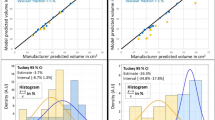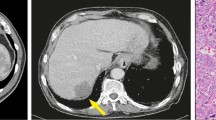Abstract
The software-assisted planning of radiofrequency-ablation of liver tumors calls for robust and fast methods to segment the tumor and surrounding vascular structures from clinical data to allow a numerical estimation, whether a complete thermal destruction of the tumor is feasible taking the cooling effect of the vessels into account. As the clinical workflow in radiofrequency-ablation does not allow for time consuming planning procedures, the implementation of robust and fast segmentation algorithms is critical in building a streamlined software application tailored to the clinical needs. To suppress typical artifacts in clinical CT or MRT data - like inhomogeneous background density due to the imaging procedure - a Bayesian background compensation is developed, which subsequently allows a robust segmentation of the vessels by fast threshold based algorithms. The presented Bayesian background compensation has proven to handle a wide range of image perturbances in MRT and CT data and leads to a fast and reliable identification of vascular structures in clinical data.
Access this chapter
Tax calculation will be finalised at checkout
Purchases are for personal use only
Preview
Unable to display preview. Download preview PDF.
Similar content being viewed by others
References
Arnold JB, Liow JS, Schaper KA, et al. Qualitative and quantitative evaluation of six algorithms for correcting intensity nonuniformity effects. Neuroimage 2001;13:931–943.
Brinkmann BH, Manduca A, Robb RA. Optimized homomorphic unsharp masking for MR grayscale inhomogeneity correction. IEEE TransMed Imaging 1998;17:161–171.
Sled JG, Zijdenbos AP, Evans AC. A nonparametric method for automatic correction of intensity nonuniformity in MRI data. IEEE Trans Med Imaging 1998;17:87–97.
Shattuck DW, Sandor-Leahy SR, Schaper KA, et al. Magnetic resonance image tissue classification using a partial volume model. Neuroimage 2001;13:856–876.
Fischer R, Hanson KM, V Dose V, von Der Linden W. Background estimation in experimental spectra. Phys Rev E Stat Phys Plasmas Fluids Relat Interdiscip Topics 2000 Feb;61(2):1152–60 2000;61:1152–1160.
Guglielmetti F, Fischer R, Dose V. Mixture modeling for background and sources separation in x-ray astronomical images. American Institut of Physics; 2004. 111–118.
Schumaker LL, Utreras FI. On generalized cross validation for tensor smoothing splines. SIAM J Sci Stat Comput 1990;11(4):713–731.
Bornemann L, Kuhnigk JM, Dicken V, et al. OncoTREAT-A software assistant for oncological therapy monitoring. Procs CARS 2005; 429–434.
Weihusen A, Ritter F, Pereira P, et al. Towards a workflow-oriented software assistance for the radiofrequency ablation. Lecture Notes in Informatics 2006;93:507–513.
Kröger T, Altrogge I, Preusser T, et al. Numerical simulation of radio frequency ablation with state dependent material parameters in three space dimensions. LNCS 2006;4191:380–388.
Author information
Authors and Affiliations
Editor information
Editors and Affiliations
Rights and permissions
Copyright information
© 2007 Springer-Verlag Berlin Heidelberg
About this paper
Cite this paper
Zidowitz, S. et al. (2007). Bayesian Vessel Extraction for Planning of Radiofrequency-Ablation. In: Horsch, A., Deserno, T.M., Handels, H., Meinzer, HP., Tolxdorff, T. (eds) Bildverarbeitung für die Medizin 2007. Informatik aktuell. Springer, Berlin, Heidelberg. https://doi.org/10.1007/978-3-540-71091-2_38
Download citation
DOI: https://doi.org/10.1007/978-3-540-71091-2_38
Publisher Name: Springer, Berlin, Heidelberg
Print ISBN: 978-3-540-71090-5
Online ISBN: 978-3-540-71091-2
eBook Packages: Computer Science and Engineering (German Language)




